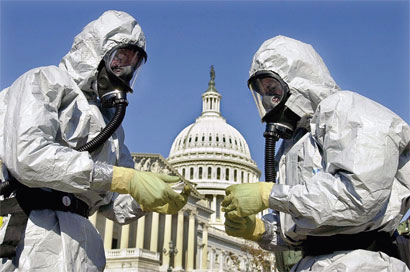Color-coded map identifies US cities at risk from bioterrorism
Washington, March 5 :  Researchers have developed a new system that identifies American cities most at risk from the threat of bioterrorism, using a color-coded map.
Researchers have developed a new system that identifies American cities most at risk from the threat of bioterrorism, using a color-coded map.
Developed by Walter W. Piegorsch, a University of Arizona researcher, the system has placed 132 major US cities – from Albany, New York, to Youngstown, Ohio – on a color-coded map that identifies their level of risk based on factors including critical industries, ports, railroads, population, natural environment and other factors.
The model employs what risk experts call a benchmark vulnerability metric, which shows risk managers each city’s level of risk for urban terrorism.
According to Piegorsch, terrorism vulnerability involves three dimensions of risk – social aspects, natural hazards and construction of the city and its infrastructure.
“Our capacity to adequately prepare for and respond to these vulnerabilities varies widely across the country, especially in urban areas,” he said.
He determined that the allocation of funds for preparedness and response to terrorism should take into account these factors of vulnerability.
The map marks high-risk areas as red, midrange risk as yellow and lower risk as green. The map also shows a wide swath of highest-risk urban areas running from New York down through the Southeast and into Texas.
Boise is the only high-risk urban area that lies outside the swath. (ANI)